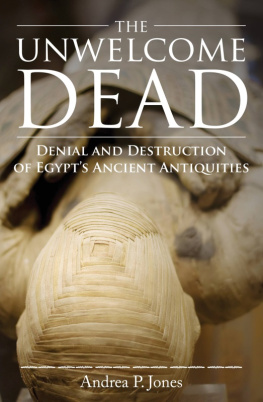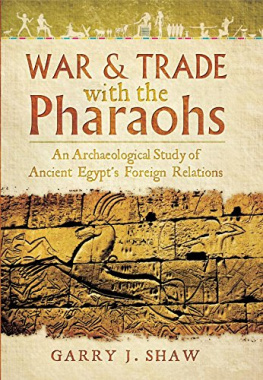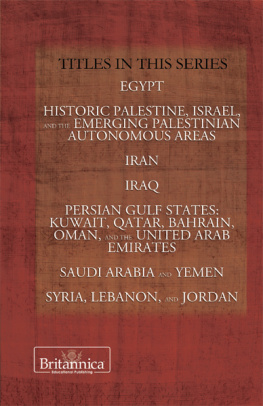The Pharaohs Kitchen
The Pharaohs Kitchen
Recipes from Ancient Egypts
Enduring Food TraditionsMagda Mehdawy
Amr Hussein
All photographs by the authors except: pages 10-11, 29, 50, 62-63, 65 by Araldo De Luca
Archivio White Star; pages 20, 64, 75, 130 courtesy of Abdel Ghaffar Shedid. Line drawings on page 117 courtesy of Lise Manniche; all other line drawings courtesy of Asma Adel. First published in 2010 by
The American University in Cairo Press
113 Sharia Kasr el Aini, Cairo, Egypt
420 Fifth Avenue, New York, NY 10018
www.aucpress.com Copyright 2010 by Magda Mehdawy and Amr Hussein All rights reserved. No part of this publication may be reproduced, stored in a retrieval system,
or transmitted in any form or by any means, electronic, mechanical, photocopying, recording,
or otherwise, without the prior written permission of the publisher. Dar el Kutub No. cm.
ISBN 978 977 416 310 4
1. cm.
ISBN 978 977 416 310 4
1.
CookeryEgypt Antiquities
2. Cookery, Egyptian
I. Hussein, Amr (jt. auth.) II. Title
641.5932 1 2 3 4 5 6 15 14 13 12 11 10 Designed by Sally Boylan
Printed in Egypt  Dedicated to the eminent Egyptologist Abd El Halim Nour El Din,
Dedicated to the eminent Egyptologist Abd El Halim Nour El Din,
whose support and knowledge were a huge help in putting this book
together. His wise opinions and sound advice have guided us
throughout this project.
We cannot thank him enough for his
immense support and passion for knowledge.
Contents
Foreword
While ancient Egyptian civilization is best noted for its architecture, its elaborate temples and tombs, and arts and sculpture, there are other aspects of ancient Egyptian society that have been far less studied. The culture of food and drinkwhich entails the methods of preparation and consumption, kitchen planning and tools, as well as references in literary and other textsis among those more obscure facets of the pharaonic era. Food and drink are necessities of life and therefore an important area of research. The habits of the past are of the utmost relevance in the continuing habits of the present, and our knowledge of the aspects of food and drink still lacks a great deal of depth. Herein is the importance of this book.
Magda Mehdawy and Amr Husseins The Pharaohs Kitchen offers a collection of modern-day recipes that have evolved from pharaonic cooking techniques and ingredients. Despite the abundant depictions of food and food preparation found on pharaonic walls and reliefs, the ancient Egyptians did not leave behind any recipes, making it difficult, if not impossible, to identify the methods of food preparation and dining etiquette of their civilization. This book is an absorbing and serious attempt to investigate and develop the scant information about food and drink that has been passed on to us from the ancients. The authors findings are drawn from their own research of ancient Egyptian texts and images, classic references in literature, as well as their own extensive experience in this field. I would like to commend the authors for their worthy addition to the research of ancient Egyptian culture, and fully anticipate that The Pharaohs Kitchen will receive the appreciation and applause that it deserves. Abd El Halim Nour El Din
Professor of ancient Egyptian language,
Faculty of Archaeology, Cairo University
Preface
Ancient Egyptian cooking is a subject that has inspired readers to find out more about the different dishes that make the Egyptian kitchenancient and presentunique.
Exploring this topic is as challenging as it is interesting. But while there may exist many depictions and images on temples and tomb walls that describe in detail the pharaonic home and kitchen, as well as the kinds of foods offered on almost all occasions from the dawn of the Predynastic era, the ancient Egyptians did not leave behind any recipes. As such it remains difficult, as one can imagine, to specify weights, measurements, and methods of preparation with any clear precision. Due to the specific cultural heritage of each area, ways of cooking may differ from one place to another, helping to individualize that region despite the similarity of ingredients. In Lower Egypt, or the Delta, for example, there has been a consecutive influence of Greeks and Romans, foreign immigration, the Islamic invasion, and the Ottoman invasion. All of these have directly impacted food and cooking habits as well as recipe variations, and the modern Egyptian kitchen in this region is the outcome of these influences.
But this has not been the case with southern Egypt (Upper Egypt and Nubia), where cooking methods and ingredients have likely remained unchanged since the days of the pharaohs due to the relative lack of foreign influences in the area. Very early on in the project it quickly became apparent that cooking methods in Upper Egypt and Nubiaregions that have always been strongly insular, adhering closely to ancient cultures and inherited traditionshave retained a pharaonic influence in their simplicity, their tendency to use few ingredients and spices, and their preference for vegetables, grains, spices, and herbs indigenous to the region. Two years of research into ancient Egyptian texts and tomb and wall reliefs depicting food preparation, cooking tools, and ingredients have found that todays southern Egyptian cuisine is likely the closest to traditional Egyptian food prepared in the kitchens of the pharaohs. As noted earlier, the ancient Egyptians left few if any recipes, so the ingredients in this book have been slightly modified to suit modern tastes. While certain foods were not introduced into Egypt until after the pharaonic age (including sugar, lemon, tomatoes, chicken, and chilli, among others), they have found their way into the modern-day southern Egyptian kitchen. The Pharaohs Kitchen has been compiled with the aim of thoroughly exploring ancient Egyptian cooking, from both historical and social perspectives.
We sincerely hope that it will provide clear, simple, and useful information for interested readers.
Chapter 1
Food in Ancient Egypt
Home and Kitchen
Pharaonic Homes Ancient Egyptian houses differed according to the social and economic class of their residents, ranging from small, basic structures for peasants and laborers to more elaborate homes for artists, priests, and men of state, villas for nobles, and palaces for kings. Ancient Egyptians lived in simple houses made of mudbrick, the structure of which varied according to social status. At al-Bersha, house models, called storehouses, were found that indicated three-story homes with separate outdoor facilities, like silos, to store grain, as well as places for weaving and making beer and furniture.

Image of the New Kingdom house of Djehuty-Nefer. A depiction of a house belonging to the nobleman Djehuty-Nefer dating to the New Kingdom shows a three-story house.
The bottom floor lies mostly underground and appears to have been used for storage with rooms for servants to perform different tasks such as grinding grain. The floors above were for the owner and contained sitting rooms and bedrooms. This relief, which is currently on display at the Louvre Museum, proves that it was not rare for the bottom floor to lie at some depth below the ground. Roofs were usually flat and could be reached by fixed stairs, or by ladders. Some homeowners built silos on the roofs. Other country homes, like that Houses of priests, civil servants, and soldiers found near Ramesses IIIs funerary temple in Medinet Habu were built in parallel rows and with a great deal of similarity.
Next page






 All photographs by the authors except: pages 10-11, 29, 50, 62-63, 65 by Araldo De Luca
All photographs by the authors except: pages 10-11, 29, 50, 62-63, 65 by Araldo De Luca Dedicated to the eminent Egyptologist Abd El Halim Nour El Din,
Dedicated to the eminent Egyptologist Abd El Halim Nour El Din, Image of the New Kingdom house of Djehuty-Nefer. A depiction of a house belonging to the nobleman Djehuty-Nefer dating to the New Kingdom shows a three-story house.
Image of the New Kingdom house of Djehuty-Nefer. A depiction of a house belonging to the nobleman Djehuty-Nefer dating to the New Kingdom shows a three-story house.